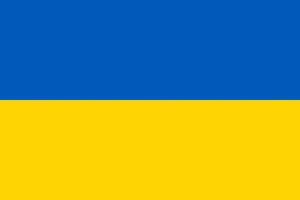Language/Ukrainian/Culture/History-and-Traditions
Introduction[edit | edit source]
Welcome to the lesson on Ukrainian history and traditions! In this lesson, we will explore the rich and fascinating history of Ukraine, from its ancient and medieval origins to its vibrant cultural traditions and customs. By learning about Ukraine's past and present, you will gain a deeper understanding of the Ukrainian language and culture. Let's dive in!
Ancient Origins[edit | edit source]
Ukraine has a long and storied history that dates back thousands of years. The region was inhabited by ancient civilizations, including the Scythians, Sarmatians, and Goths. These early inhabitants left behind archaeological treasures that provide insight into their way of life.
One of the most famous archaeological sites in Ukraine is the Trypillian culture, which thrived from 5400 to 2700 BCE. The Trypillians were skilled farmers and craftsmen, known for their elaborate pottery and well-planned settlements. Their culture is considered one of the most advanced in Europe during that time.
Medieval Ukraine[edit | edit source]
During the medieval period, Ukraine was divided into several powerful states, including Kyivan Rus, the Galicia-Volhynia Kingdom, and the Cossack Hetmanate. These states played a crucial role in shaping Ukrainian identity and culture.
Kyivan Rus, founded in the 9th century, was a powerful state centered around the city of Kyiv. It was a major center of trade and culture, and its influence extended as far as Scandinavia and Byzantium. Kyivan Rus adopted Christianity in the 10th century, which further enriched its cultural heritage.
The Galicia-Volhynia Kingdom, established in the 12th century, was known for its vibrant art and architecture. The kingdom's rulers, such as King Danylo and Queen Olha, were patrons of the arts and promoted the development of Ukrainian literature and culture.
The Cossack Hetmanate, which emerged in the 17th century, was a semi-autonomous state led by the Cossacks, fierce warriors and skilled horsemen. The Hetmanate played a pivotal role in defending Ukraine against external threats and preserving its cultural identity.
Cultural Traditions and Customs[edit | edit source]
Ukrainian culture is deeply rooted in its history and traditions. Ukrainians take great pride in their customs and celebrate them through various festivals and rituals throughout the year. Let's explore some of the most important traditions and customs in Ukrainian culture.
Easter[edit | edit source]
Easter, or "Velykden" in Ukrainian, is one of the most important religious holidays in Ukraine. It is a celebration of the resurrection of Jesus Christ and marks the beginning of spring. Ukrainians celebrate Easter with a variety of customs, including decorating eggs, attending church services, and preparing a festive meal.
One of the most popular Easter traditions in Ukraine is the decoration of pysanky, intricately designed eggs. Pysanky are created using a wax-resist method, where patterns are drawn on the eggs with melted beeswax and then dyed in vibrant colors. Each design has a symbolic meaning and is believed to bring good luck and protection.
Vyshyvanka[edit | edit source]
The vyshyvanka is the traditional Ukrainian embroidered blouse or shirt. It is a symbol of national pride and identity and is worn on special occasions and holidays. The intricate embroidery patterns on the vyshyvanka often depict floral motifs, animals, and geometric shapes, each with its own symbolic meaning.
Ukrainians take great pride in their vyshyvankas and consider them a way to connect with their ancestors and preserve their cultural heritage. Today, the vyshyvanka has become a popular fashion trend, both in Ukraine and around the world, with designers incorporating traditional embroidery into modern clothing styles.
Hutsul Culture[edit | edit source]
The Hutsuls are an ethnic group living in the Carpathian Mountains of western Ukraine. They have a distinct culture and are known for their vibrant folk traditions, music, and dance. Hutsul music is characterized by its lively rhythms and the use of unique traditional instruments, such as the trembita, a long wooden horn.
Hutsul dances, such as the "Arkan" and "Kolomyika," are energetic and often performed in traditional costumes. These dances are an integral part of Hutsul celebrations and festivals, where locals and tourists alike gather to enjoy the lively music and colorful performances.
Christmas and New Year[edit | edit source]
Christmas and New Year are widely celebrated in Ukraine, with various customs and traditions. Christmas, or "Rizdvo" in Ukrainian, is celebrated on December 25th and is a time for family gatherings, festive meals, and the exchange of gifts.
One of the most cherished Christmas traditions in Ukraine is the singing of carols, known as "kolyadky" and "shchedrivky." Groups of children and adults go from house to house, singing carols and wishing blessings for the upcoming year. This tradition is believed to bring good luck and prosperity to the household.
On New Year's Eve, Ukrainians gather with family and friends to celebrate the arrival of the new year. The celebrations often include festive meals, fireworks, and the singing of popular New Year songs. It is also a time for making wishes and setting goals for the year ahead.
Conclusion[edit | edit source]
In this lesson, we have explored the rich history and cultural traditions of Ukraine. From its ancient origins to its vibrant customs, Ukraine's history and traditions are an integral part of its identity. By understanding and appreciating Ukrainian culture, you will deepen your connection to the language and gain a greater appreciation for the Ukrainian people. Keep exploring and learning, and you will continue to uncover the wonders of Ukrainian culture!
Other Lessons[edit | edit source]
- Geography
- Tourism and Travel
- Language and Literature
- Modern music
- Sports and Leisure
- Cuisine
- Folk music
- Politics and Society
- Famous Ukrainians

